Note: Measurements taken in the anechoic chamber at Canada's National Research Council can be found through this link.

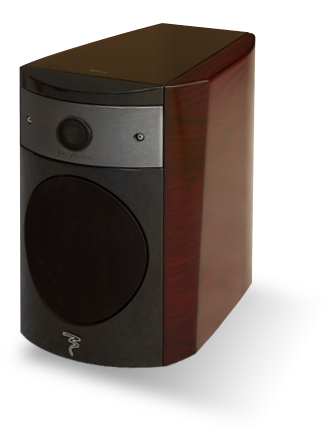 Punctuated equilibrium is a theory in evolutionary biology that posits that most species are stable for most of their evolutionary history. During this time, their genomes (i.e., their DNA) remains relatively unchanged, but that stasis is sometimes interrupted by a rare but significant event -- a drought, for example -- that can isolate from each other populations of the same species. One or more of these isolated populations can then be subjected to strong new selective pressures by their altered environments that lead to rapid changes in their genomes. Speciation, the process by which one species splits into two or more species, can occur with relative rapidity, at least as measured on an evolutionary timescale.
Punctuated equilibrium is a theory in evolutionary biology that posits that most species are stable for most of their evolutionary history. During this time, their genomes (i.e., their DNA) remains relatively unchanged, but that stasis is sometimes interrupted by a rare but significant event -- a drought, for example -- that can isolate from each other populations of the same species. One or more of these isolated populations can then be subjected to strong new selective pressures by their altered environments that lead to rapid changes in their genomes. Speciation, the process by which one species splits into two or more species, can occur with relative rapidity, at least as measured on an evolutionary timescale.
This notion of speciation got me thinking about the rate at which loudspeakers have evolved since 1924, when two General Electric engineers patented the first moving-coil, direct-radiating driver. Given that the basic design of today’s cone drivers are similar to those of nearly a century ago, it would seem that the change since then has been mostly gradual (the evolutionary analog to this is phyletic gradualism).
However, when a pair of Focal’s Electra 1008 Be 2 bookshelf loudspeakers arrived for review, their beryllium-dome tweeters got me thinking that even basic driver design could potentially evolve rapidly, given better materials from which to make those drivers’ diaphragms. I’d never heard a beryllium tweeter in my room before, and given all that’s been written about the metal’s inherent advantages, I was curious to hear it for myself. After all, the true measure of loudspeaker evolution is not whether speakers are made using technologies that perform better on paper, but whether or not they sound better.
The case for beryllium
As many readers are likely aware, beryllium tweeters aren’t new. They began showing up in speakers about a decade ago, and are now used in the more expensive offerings of more than a few manufacturers. Beryllium is lighter and stiffer than aluminum or titanium, the two metals most commonly used in dome tweeters (magnesium is also used, albeit to a lesser extent). Beryllium’s low mass and high rigidity are important because, as a tweeter moves back and forth, it must do so in as nearly perfect a pistonic action as possible; that is, the dome must move uniformly, without its shape ever being deformed by that motion. When the dome stops moving in this manner, it experiences breakup, which causes distortion in the highest frequencies. Beryllium’s greater stiffness means that the frequency at which it begins to deform is higher than that for aluminum or titanium. And the element’s superior self-damping allows the dome to stop more rapidly at the end of a musical signal, and maintain high output at the low end of its operating range -- two more traits that make it an ideal material for a high-frequency driver.
Electra 1008 Be 2
French loudspeaker manufacturer Focal first used a pure-beryllium inverted-dome tweeter in 2003, in their flagship Utopia models. Measuring 1” in diameter, it tipped the scales at a measly 21mg. Though pleased with how their Be (for beryllium) tweeter performed up to 40kHz, the upper limit of its range, Focal wanted to extend its performance at the low end as well, which led them to develop an even wider-bandwidth driver using a technology they’ve trademarked as Infinite Acoustic Loading. IAL basically means that the tweeter is crossed over to the midrange-woofer at the lowest frequency possible. In lowering the crossover frequency, Focal wanted to operate the tweeter across most of the 2-5kHz range, in which the human ear is most sensitive. To achieve this, they increased the dome’s diameter from 1” to 1.25”, which they claim improves both dynamics and precision.
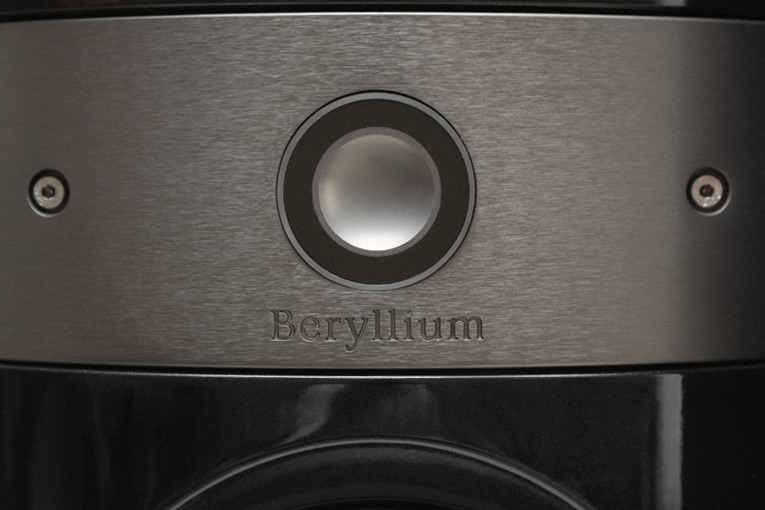
Focal’s Electra 1008 Be 2 ($5499 USD per pair) features their latest 1.25” pure-beryllium, IAL inverted dome. It’s mounted on a metal faceplate that curves gently back toward the sides of the speakers, presumably to minimize diffraction, and is crossed over to a 6.5” midrange-woofer made of Focal’s W material, a patented composite that I encountered earlier this year when I reviewed the Electra 1008’s less-expensive bookshelf sibling, the Chorus 807 W.
W is made of multiple thin layers of glass on both sides of a central core of foam. Focal claims that this makes a lighter, more rigid diaphragm with excellent self-damping properties. By changing the density and the number of layers of glass and the thickness of the foam, Focal has adapted W for use in midrange drivers, woofers, and hybrid drivers, as seen in the Electra 1008 Be 2. Both the tweeter and midrange-woofer are made in-house by Focal and are crossed over to each other at 2.2kHz.
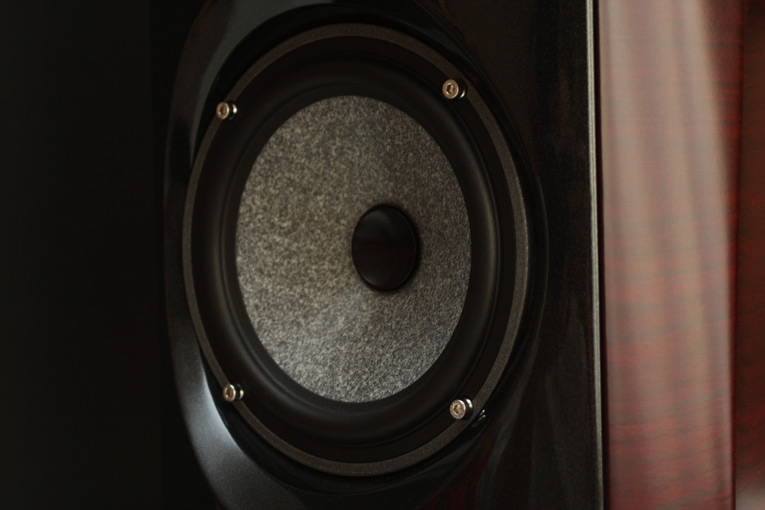
Removable grilles protect both drivers in transit. The small metal grille that attaches magnetically over the tweeter should be removed, but I decided to remove the cloth one covering the midrange-woofer as well. Because that 6.5” driver is recessed into the front baffle almost like a mini waveguide, the grille gives the front of the speaker a more continuous surface, and by hiding the driver it helps the 1008s visually “disappear” a bit better into the background. But I didn’t like how the cloth’s flat finish contrasted with the gloss black surrounding it, so off the grilles came.
Focal claims for the 1008 Be 2 a frequency response of 46Hz-40kHz, ±3dB, an impedance of 8 ohms (dipping to 3.9 ohms minimum), and 89dB sensitivity. These specs suggest a speaker that’s relatively easy to drive, and I found this to be so. Unless your amplifier is uncomfortable with a 4-ohm load, you shouldn’t need too many watts to get high output from the 1008s in anything but the largest room. Focal themselves recommend anything from 25 to 150Wpc.
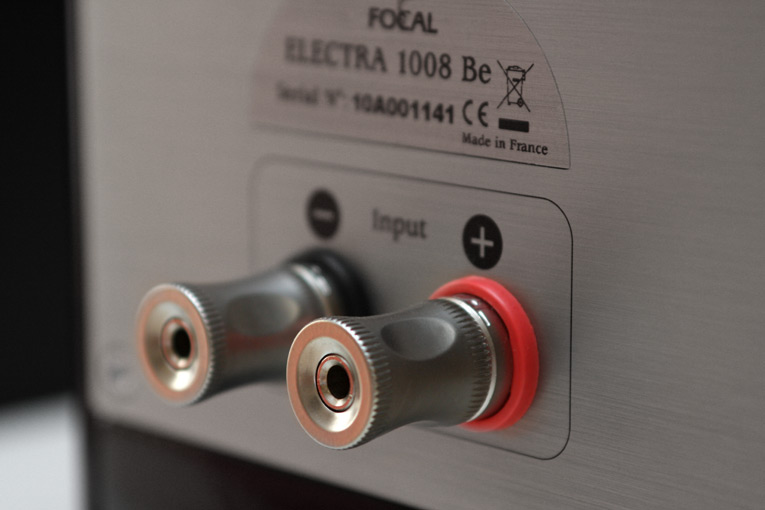
A bass-reflex design, the 1008 Be 2 is ported through a wide slot at the base of its backside reminiscent of the PSB Platinum M2s I used to own, which had a similarly shaped port on the front. The 1008 measures 15 3/16”H x 10 3/8”W x 13 3/4”D and weighs 33 pounds. The top, rear, and bottom panels are all finished in high-gloss black, while the wooden side panels come in a choice of Mahogany, Basalt, Champagne, or Black Lacquer. I generally don’t like gloss finishes, but the warm glow of the mahogany sides and the beautiful brushed finish of the metal faceplate were striking and sophisticated. On closer inspection, it became clear that a great deal of care was taken in designing and building these speakers; even the single pair of binding posts are of high quality. They accept banana plugs, spades, or bare wire; I found they snugly fit the bananas I plugged into them.
System and sound
I inserted the Electra 1008 Be 2s into a system consisting of Simaudio’s Moon Evolution 700i integrated amplifier and Moon Evolution 650D DAC-transport. The 700i and 650D were connected using Nordost Quattro Fil balanced interconnects, and Type 4 speaker cables from AudioQuest linked the 700i to the Focals. The 650D’s DAC was used for listening to music streamed wirelessly from an Apple iMac computer through an Apple Airport Extreme to an Apple Airport Express. An XtremeMac XtremeHD TosLink cable linked the Express with the 650D’s optical input. All electronics were plugged into an ExactPower EP15A power-line conditioner-regenerator. To listen to CDs, I sent the digital signal from the 650D via an i2Digital X-60 digital coaxial cable to Hegel’s superb HD20 DAC. For the comparison section I used an NAD C 542 CD player as a transport; its coaxial digital signal was sent via the i2Digital cable to the Hegel.
The speakers were positioned as far out into the room as possible, in an attempt to balance low-end output with their ability to create a large, three-dimensional stage. In the end, the inner edge of their front baffles were 42” from the front wall, the outer edges 24” from the side walls, and their tweeters were 70” apart. Once I’d them set up and spent a few days listening, one thing became very clear: there was a lot to like about these speakers.
As I reviewed my listening notes, I was overwhelmed by the sheer number of adjectives I’d managed to squeeze into just a few pages. If I were to whittle down that list to just three words, they would be precise, full, and clean. One recording that let me hear all three of these attributes was “So What,” from Miles Davis’s Kind of Blue (CD, Columbia/Legacy CK 64935), which sounded as good as I’ve ever heard it in my room. The piece was so well sorted on the stage that it was akin to being in the studio at the original recording sessions in 1959. The double bass of Paul Chambers had body and weight, and its warm resonance was very lucid. John Coltrane’s tenor saxophone had a shiny tone that extended cleanly and smoothly into its highest registers, as the Focals did a nice job of outlining its position on the left side of the stage. Jimmy Cobb’s cymbals shimmered with crystalline clarity as they provided a lively backdrop for Davis, who is heard in front of the drum kit. I’ve listened to Kind of Blue through more systems than I can recall, and while many of them have sounded good, only a few have stood out; the combination of Simaudio and Hegel electronics with the Focal bookshelf speakers did just that. It was really the coherence of the performance that I admired, and heard countless times while listening to these speakers.
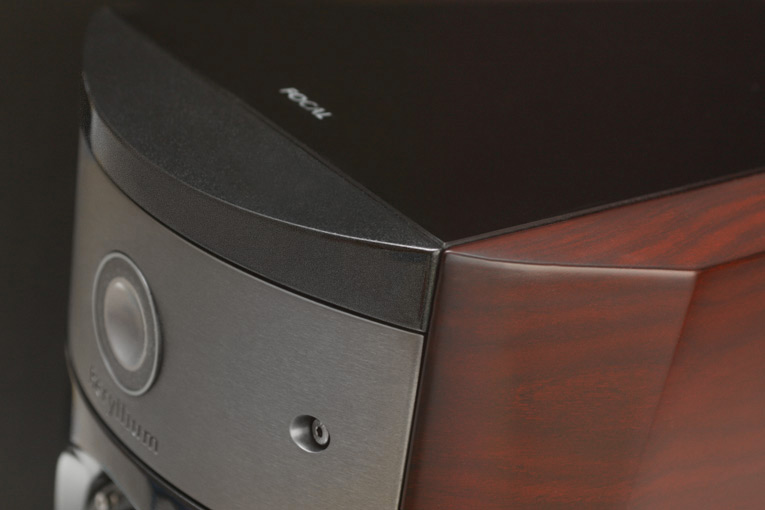
The ability of the Focals to convey a coherent sound was again manifested with “Your Rocky Spine,” from Great Lake Swimmers’ Ongiara (CD, Nettwerk 30691 2) -- the French speakers produced a very precise stage that extended beyond their outer edges and well behind their cabinets. The punch of the kick drum as the track begins was palpable, possessing both weight and warmth as it bloomed out into the room. The strings of the banjo on the left side of the stage were crisp and clear, as was the sound of the acoustic guitar, almost directly in front of me. What impressed me most on hearing this track was how full it sounded -- something I consistently noticed with the 1008s. With well-recorded music the Focals were able to re-create a very big sound that could easily fill all but the largest rooms, if at the expense of the lowest frequencies, which no bookshelf speaker can reproduce. If you want more bass you’ll have to add a subwoofer or buy a floorstander, but unless you need really deep bass, none of that is necessary. In fact, if I heard the 1008 Be 2s hidden behind a curtain in a blind listening test, I’d probably guess they were floorstanders.
Christmas was fast approaching as I worked on this review, which had me listening to an old festive favorite of mine, Loreena McKennitt’s To Drive the Cold Winter Away (CD, Quinlan Road QRCD 102). “Banquet Hall” is a beautiful instrumental that provided the 1008s with a chance to demonstrate what the new beryllium tweeter could do higher in its range. In a nutshell, it sounded pristine, managing to communicate inner detail, and subtleties such as the leading edges of notes and the harmonics that follow, in a natural way that wasn’t analytical. The finger cymbals in this song sparkled like sharp bursts of light, their little metal plates shimmering in what sounded like an immense space. I’ve noted that the Focals had a big sound, but what I heard with this CD was an intimate sound in a big space, which is not the same thing. Further evidence of this was provided by “In Praise of Christmas,” where the sound of people working in the background at the Church of our Lady in Guelph, Ontario, had been captured by the microphones. These sounds are rather distant, but rather than being an unfortunate reality of recording on location, the faint echoes actually benefit the music by helping to convey the size of the venue.
When I moved on to something a little less delicate -- “Caught a Lite Sneeze,” from Tori Amos’s Boys for Pele (CD, Atlantic 82862-2) -- it became obvious the 1008s were capable of responding unflinchingly to wider dynamic shifts. “Caught a Lite Sneeze” is another big-sounding track whose sense of scale the Focals easily captured. The stage they created was immense, populated by larger-than-life, in-your-face aural images that were unapologetically immediate. The percussion was delivered with power and poise, and Amos’s voice, the centerpiece of the cacophony, was vividly present and detailed. Every breath Amos took was clearly portrayed through the 1008s, as well as more subtle details such as her phrasing.
The Electra 1008 Be 2 was pretty revealing of what the other components in my system were doing, its transparency making it easy for me to hear the character of both the electronics and the recordings themselves -- such as “Pink Matter,” from Frank Ocean’s Channel Orange (CD, Def Jam/Island B001578802). Through the Simaudio 650D’s DAC, Ocean’s voice sounded clear and sweet, if a bit distant in terms of its place at the front of the room. When I switched over to the Hegel HD20’s DAC, Ocean’s voice seemed to jump out of the mix, the overall sound becoming more forward and immersive. The 1008 Be proved useful for uncovering the personality of each DAC, and would likely be an educational tool for those who want to better understand what the upstream components of their system are contributing to its sound.
Comparison
I compared Focal’s Electra 1008 Be 2 with Amphion’s Argon3L floorstanding speaker ($3995/pair). The Finnish-made Amphion combines a 6.5” aluminum midrange-woofer with a 1” titanium-dome tweeter mounted at the base of a deep waveguide, and, like the Focal, is a two-way, ported design. Amphion crosses its drivers over at 1.6kHz, chosen to get the crossover point outside the 2-5kHz range.
In some respects, the Electra 1008 Be 2 and Argon3L sounded more alike than different. When I again played Loreena McKennitt’s “Banquet Hall,” both speakers sounded quick and insightful, with a level of clarity that puts them among the best. This is saying quite a bit for the Focal; since I first heard the Amphion three years ago, it’s remained for me a benchmark for clarity. The Electra 1008 Be 2 was at least as good in this regard, with a transparency that made it easy to hear deep into my favorite music -- and with the very best recordings, it was almost as if I could walk out on the stage spread out in front of me. For buyers who value resolution and clarity, the Electra 1008 Be 2 may set a new standard for what can be expected from a reference minimonitor.
With “Banquet Hall,” one thing that let me distinguish the Focal from the Amphion was the sound of the finger cymbals. While the Argon3L’s tweeter produced a wonderfully detailed and articulate sound, the 1008 Be 2 had a touch more energy up top, an extra bit of sparkle that drew my attention more toward this part of the song. In general, both tweeters sounded very controlled and extended up top, and more alike than different. Their speed and incisiveness were superb, and the ability of each to delineate transients was as good as it gets -- or pretty darn close, based on my experience. However, when I heard it, I enjoyed the Focal’s extra bit of sizzle, which never came across as unnatural or forced.
Down low was a different story. Although the French and Finnish speakers are both disciplined and can produce bass with commendable clarity at high volumes, they differed in how low they could go. With “m.A.A.d. city,” from Kendrick Lamar’s good kid, m.A.A.d. city (CD, Aftermath/Interscope B001753602), the Focal offered a tighter sound, delivering a good wallop of midbass energy on the beat; but rather than rumbling into lower frequencies that trailed off gradually, its output at the low end seemed to just drop off altogether, which resulted in the bass having a taut punch. The Amphion pushes further, sounding fatter and playing deeper than its French counterpart. The Argon3L is too clean a speaker to really rumble, but it certainly plays deeper and with more authority than the Focal -- a direct benefit of being a floorstander with a more voluminous cabinet to supplement its bass output. If you want clean and deeper bass, the Argon3L bests the Electra 1008 Be 2 -- but the latter didn’t give up much, still producing plenty of low end for many listeners’ tastes.
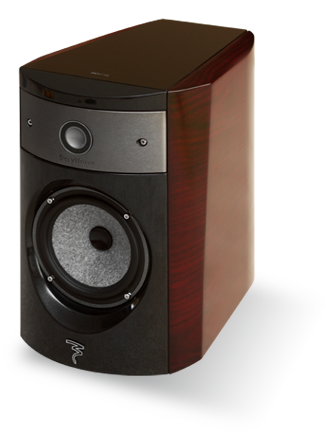 Conclusions
Conclusions
No speaker I’ve reviewed in the past year has impressed me more than Focal’s Electra 1008 Be 2. It performs well in so many areas, but it is its precision, fullness, and clarity that launch it into that special class of speakers that nearly touch the high point of the price/performance curve. At the beginning of this review I questioned whether changes in speaker design occur gradually and consistently or in bursts. Even after hearing the 1008 Be 2’s newest-generation beryllium tweeter, I’m not sure that the use of this metal is an example of punctuated equilibrium in the evolution of loudspeaker design. Don’t get me wrong -- the 1008 Be 2’s beryllium tweeter is as good as anything I’ve heard. But the speaker’s strength has nothing to do with one single part; rather, it’s the integration and implementation of all of its parts that resulted in the sound I heard. The Electra 1008 Be 2 is simply a well-executed loudspeaker whose designers obviously had very few restrictions on what they could do, and its sound reveals that. If you’re in the market for a reference bookshelf speaker, you’d be making a terrible oversight if you didn’t include the Electra 1008 Be 2 on your audition list. Highly recommended.
. . . Philip Beaudette
philipb@soundstagenetwork.com
Associated Equipment
- Speakers -- Amphion Argon3L
- Integrated amplifiers -- Bryston B100 SST, Simaudio Moon Evolution 700i
- Sources -- Simaudio Moon Evolution 650D DAC-transport, NAD C 542 CD player; Thorens TD-160HD turntable, Rega RB250 tonearm, Dynavector DV-10X5 high-output moving-coil cartridge; Apple iMac computer, Apple Airport Extreme, Apple Airport Express
- Speaker cables -- AudioQuest Type 4
- Interconnects -- AudioQuest Copperhead, AMX Optimum AVC 31 coaxial, XtremeMac XtremeHD TosLink
- Power conditioner -- ExactPower EP15A
Focal Electra 1008 Be 2 Loudspeakers
Price: $5499 USD per pair.
Warranty: Five years parts and labor.
Focal
BP 374, 108 rue de l’avenir
42353 La Talaudière Cedex
France
Phone: (33) 4-77-43-57-00
Website: www.focal.com
North American distributors:
Audio Plus Services (US)
156 Lawrence Paquette Industrial Drive
Champlain, NY 12919
Phone: (800) 663-9352
Website: www.audioplusservices.com
Plurison (Canada)
313 Marion Street
Le Gardeur, Quebec J5Z 4W8
Phone: (866) 271-5689
Website: www.plurison.com






















